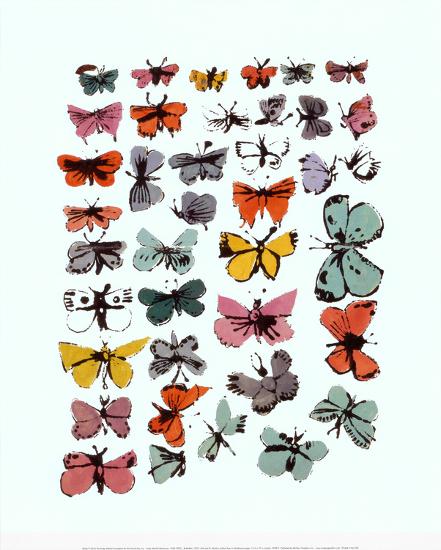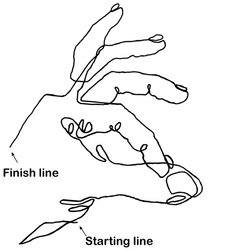GRADES 1-3 DAILY "BELL WORK" FOR WEEK SEVEN
Rufino Tamayo
Rufino Tamayo
Duality (1964)
Rufino Tamayo
Fruit Bowl with Apples (Frutero con manzanas)
(1981)
https://www.boijmans.nl/en/collection/artists/12499/claude-monet
UPCOMING "BELL WORK" FOR WEEK EIGHT
Claude Monet
Study of Five Boys
(1864)
Claude Monet
Vase de Pavots (Purple Poppies--1883)https://www.boijmans.nl/en/collection/artists/12499/claude-monet
All students complete "bell work" at the start of each class before any other instructions are given. As soon as students are seated, they are to immediately put pencil to paper and begin drawing the image projected before them; no questions, no comments; no distractions.
****(Kinder will begin doing bell work near the end of second quarter)
All attention is focused on looking carefully and recording what students SEE.
This is SILENT work time. Students are working independently, although I often interject with some guidance and state simple parameters. Students are graded primarily on their efforts and participation, not entirely on the outcome of their drawing.
After drawing, we have a brief class discussion to learn more about the artwork. We make some guesses at to what the work may be about; what the story may be behind the work. We THINK about how the artist used line, color, shapes, etc. to communicate meaning and emotion. We discuss how we may not all respond to the art work in the same way.
The final step in our Bell Work exercise is to ask ourselves more questions about the art work. We WONDER what the artist intended to communicate. This is where Ms. Northway may need to do some research to share what she learned about the artist and her/his life experiences.
I typically show students three artworks by the same artist. In this way, they become familiar with the style of a particular artist, and often can recall the artist's name. All of the children's drawings will be glued into small weekly/bi-weekly books to bring home.
PLEASE KEEP YOUR CHILD'S WEEKLY BOOKS IN A SAFE PLACE (and ordered in a BIG 3 RING BINDER) SO YOU CAN SEE GROWTH THROUGHOUT THE YEAR.
K-3 PROJECTS: WEEK 7
After bell work, students use sketchbooks for more extensive, ongoing projects.
KINDER
Elements of Art - Line, Shape, Color
Elements of Art - Line, Shape, Color
We continued to learn about the difference between organic and geometric shapes.
Students learned how to draw an octagon. But first.......We imagined ourselves as birds flying over the building pictured below:
What shapes would we see? A circle surrounded by a triangle...a square...a rectangle???
Nope, none of the above, but an octagon. I love how kinders get so exited about learning to draw shapes with such interesting names. :)
After a few practice sketches of octagons, we copied from the photograph below to make a colorful crayon drawing with shapes, and of course, a bird flying above.
Dome of the Rock--https://www.khanacademy.org/humanities/ap-art-history/west-and-central-asia/a/the-dome-of-the-rock-qubbat-al-sakhra
FIRST
Elements of Art - Line, Shape, Color
Students continued working on their drawing of a bee with honeycomb.
We actually spent most of the class time working on bell work drawings this week.
The upcoming sketchbook project this week will be a self-portrait focusing on proportions of the face and the correct placement of facial features.
Students continued working on their drawing of a bee with honeycomb.
We actually spent most of the class time working on bell work drawings this week.
The upcoming sketchbook project this week will be a self-portrait focusing on proportions of the face and the correct placement of facial features.
GRADE 2
Elements of Art - Line, Shape, Color, Space
We are continuing to fill in the butterfly shapes with oil pastels. Once complete, they will be cut out and a black backing glued on. Every butterfly will be attached to thread and hung from ceiling of my classroom.
Second graders did this last year as well and I love the idea of this being THE second grade project that the first graders look forward to doing. They are just lovely to look at as they slowly turn in the breeze of the air-conditioning ;)
Second graders did this last year as well and I love the idea of this being THE second grade project that the first graders look forward to doing. They are just lovely to look at as they slowly turn in the breeze of the air-conditioning ;)

Andy Warhol
Butterflies (1955)
https://www.tate.org.uk/art/artworks/warhol-happy-butterfly-day-ar00249
Butterflies (1955)
https://www.tate.org.uk/art/artworks/warhol-happy-butterfly-day-ar00249
GRADE 3
Elements of Art - Line
Students continued to work on Blind Contour Drawings of their hand, face and neighbor's facial features.
I am really taking this drawing exercise slowly this year to ensure that students really grasp this concept of blind contour drawing. It requires a lot of trust in their teacher and self-discipline. Students are learning the meaning of making a "drawing study" and how practice is necessary to "warm up" as if playing an instrument.
{ I have witnessed quite a few "light bulbs" start to flicker and turn on.....very satisfying :) }
A seriousness and focus is beginning to develop with each small successful line study, as well as a sense of accomplishment..........as I continue to talk on and on of the beauty in imperfection and the sensitivity and thoughtfulness of a delicate line.
A line drawing hand study will be made this coming week. It is my hope that students will be up for the challenge and have matured in their understanding of their own artistic and personal development.



Leonardo Da Vinci
Study of a Woman's Hand
https://www.leonardodavinci.net/study-of-arms-and-hands.jsp




